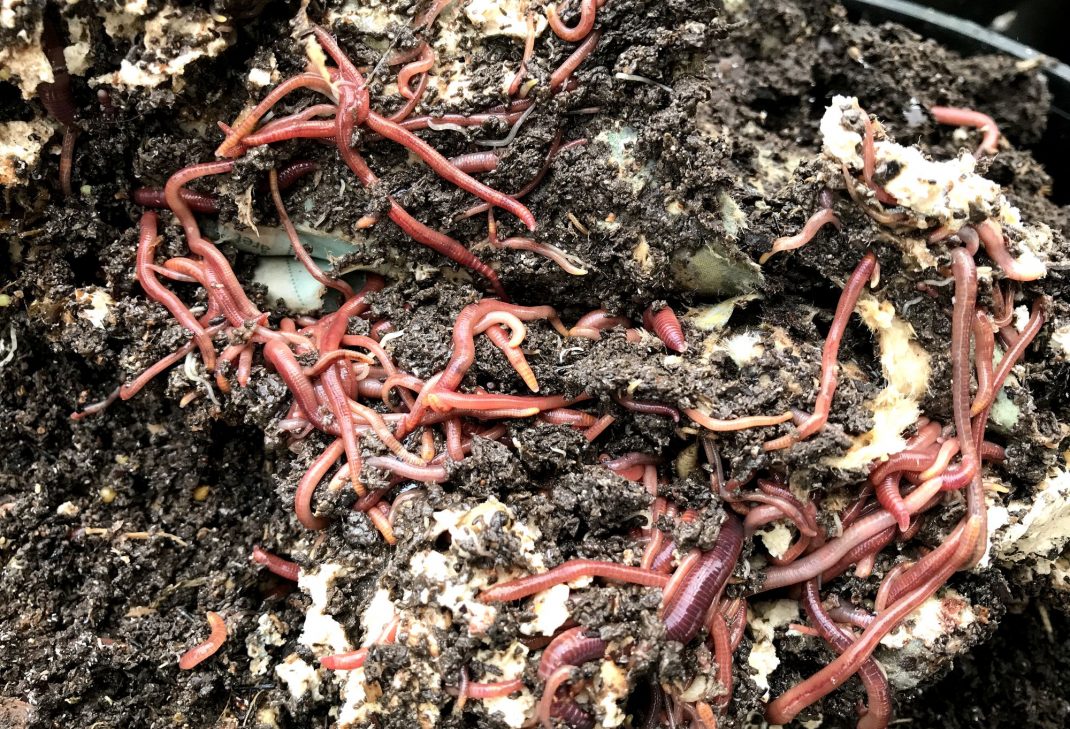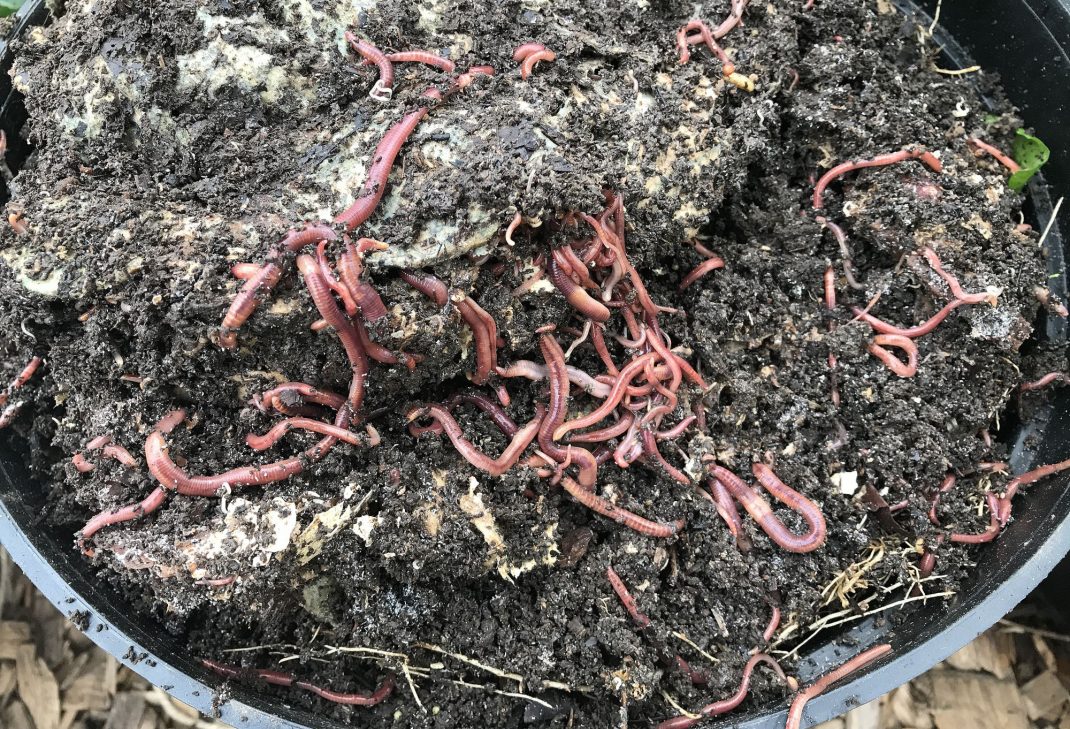Earthworms are a gardener's best friend
I have plenty of earthworms here in the kitchen garden. They might not look very nice, but they are extremely useful!

Worms living in a pot with bokashi compost in the greenhouse.
It’s lovely to reap the awards of much hard work and finally getting to see the garden beds flourish. But there’s something even more satisfying about coming across my little helpers in the garden and seeing how well we work together. Their presence is a sign that I’m doing something right. With their help, I think I can count on a lot of growth in the garden bed when spring comes again.
I have been interested in earthworms ever since I bought my first house and started a makeshift compost pile there. I must have inherited this special interest in earthworms from my mother. She used to be a true composting enthusiast when I was a child. One of the most memorable moments in my long history with earthworms was when my mother tried to build a compost pile in the basement. We ended up with hundreds of earthworms crawling on our damp basement floor, trying to escape. I have of course built failed compost piles myself since. I once tried vermicomposting in an apartment in Stockholm. Needless to say: it’s a lot easier to keep your wormy friends outdoors.
I want to take good care of the earthworms in my garden simply because of how useful they are. There are many different kinds of worms and they are all equally important. The more earthworms in the garden, the better for the soil. These are just a few of the tasks that the earthworms help me with:
Create new soil: The worms transform organic matter like compost or mulch into new soil.
Create vermicast (worm manure): New soil is created when the earthworm eats organic matter and then defecate. This soil is a lot more nutritious than what the earthworm ate. Worm poop is actually used as a commercial manure product!
They push air through the soil: The earthworms create little cavities in the soil when they move around. These cavities are essential for the health of the soil. And if there’s plenty of earthworms in the ground, they do the digging for me.
How to make earthworms happy: Try mulching
There are a few things you can do in the garden to keep the earthworms extra happy. I try to impress on my earthworms by using mulch in the large garden. Click here to read more about mulching. Adding a lot of organic mulch attracts the worms. They are also quite quick to reproduce in an environment that suits them. So all I really need to do in order to get plenty of vermicast from the earthworms is to add mulch to my garden. As a bonus, they also help me loosen the soil in a phenomenal way.
They say that every earthworm produces around 0,035 oz (1 gram) of manure per day. If you use a good layer of mulch on your garden bed, you can count on getting around 500-1000 worms. Let’s say that we use a 19 ft long garden bed covered with mulch and assume that the earthworms can work the soil around 9 months each year. That leaves us with about 7 lbs (3 kilos) of manure/24 hours and altogether nearly 1800 lbs (810 kilos) over the entire 9 month period. All this in only one single garden bed. With this in mind, it’s easy to see the value of mulch!

The earthworms reproduce quickly and will process the bokashi compost in no-time.
For me, it means that the simple task of just adding mulch to my garden beds provides me with much more manure than I would ever add. The end result is healthy and nutritious soil at no cost at all. Mulching is the best!
The earthworms can help not only in the garden beds but also in pots and tunnel greenhouses. The pictures above show a pot I filled with bokashi compost around 6 months ago, as described in the video below:
Read more about bokashi compost here: Using bokashi compost in your garden
There are a few scraps of compost and plenty of worms left when I empty the pot. These little redworms thrive in soil with a lot of organic matter, both compost, and mulch. Other types of earthworms are less common in this kind of habitat.
How did the worm get into the pot? From the ground through the draining holes in the bottom of the pot. So it’s a good idea to grow your vegetables in pots where worms can come and go. The worms find their way to the pot through the garden fabric and a layer of wood chips. Once in the pot, they’re happy to eat and reproduce as much as they can. There are thousands of different redworms in all sizes.
Do you know what the worms do when the feast in one pot is over? They move on to the next one! When I turn over a pot where the composting is finished, it’s almost completely empty of worms.
There’s nothing left to work with which means that the worms slither away to other pots and garden beds. All that’s left is really lovely and nutritious soil that I can use for the next season.
Get ready for plenty of worms
My first priority is to stay on top of the mulching. A good layer of mulch helps insulate the soil underneath. This will in turn enable the worms to work closer to the ground for a bit longer. I also make sure to compost all my household waste for the worms. If you would like to know more about how I do my bokashi winter compost, feel free to click on the video below. The video also shows you how the worms are doing in the compost bin when spring comes around again. Remember that the worms have been working on the compost all winter.
It’s easy to forget all the wonderful work the earthworms do for us in the garden, especially if we never see them go at it. But there’s plenty going on underneath the mulch and in the compost bin. And we clearly work very well together. Remember how useful your earthworms are and cherish the ones you find in the garden!
/Sara Bäckmo



Leave a Reply
You must be logged in to post a comment.